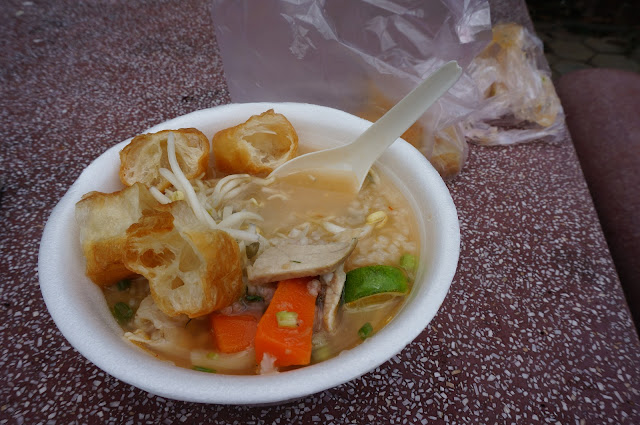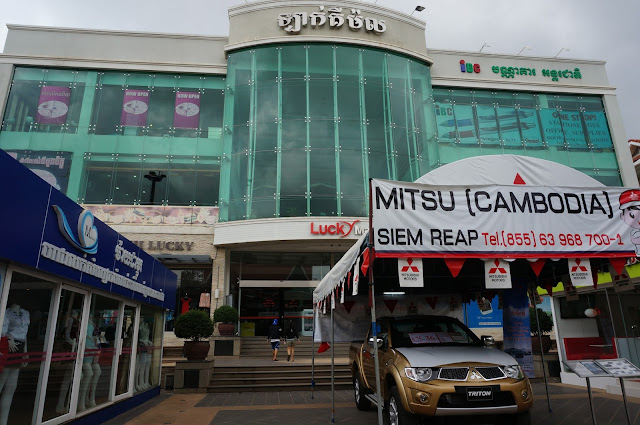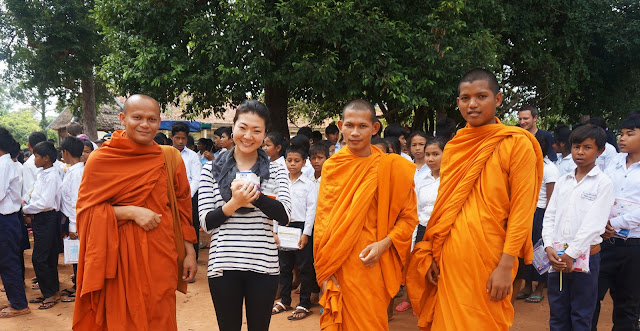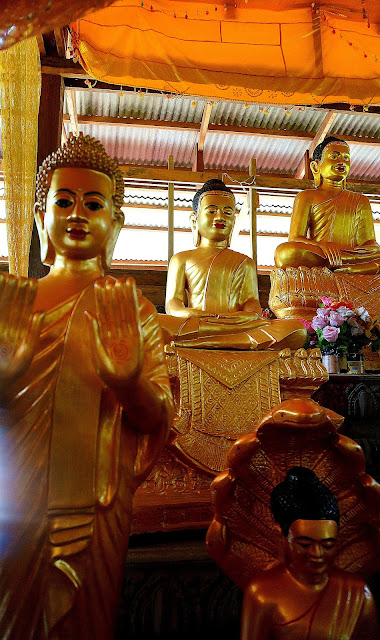As many of you already know, I am running the Angkor Wat Half Marathon in tomorrow. I've been training the past month and a half and I just wanted to write some thoughts down before the big race.
I've been spoiled running in the unsullied streets of Tokyo the past few years so it's certainly been a challenge to run in Siem Reap. or one thing, you have to run very early to avoid the searing heat and av heavy traffic. The best time is to start around six o'clock, just when the sun rises so waking up at five is essential. The roads are bumpy, dusty, and muddy so watching your footsteps is vital. Also you have to keep your eye on and dodge your way around motorcyclists, cars, cyclists, and stray dogs. It's like running in an obstacle course in some ways!
Nevertheless, it's been a joy to be able to run here. I love to run as I watch the sun quietly rise over Siem Reap river. The city slowly come to life with vendors making their way into the streets and tuktuk drivers chatting away with iced coffees in hand.
 |
| Beautiful sunset...one of the very few times I've gone running in the afternoon since it was a cool day. Otherwise I'll be melting. |
I've realized I've been running for more than half my life now. I don't run everyday but when I try to schedule in runs and races when I can and it's something that I truly enjoy. But ever since I've started running in Cambodia, I've seriously started to wonder why I run and what motivates me to run.
Let me start out that Cambodians hardly run. They don't even walk fast; they saunter. In a hot country like Cambodia in which people try to avoid the heat as possible, why volunteer oneself to go running and get drenched in sweat under the sun? Hence the reactions of the locals watching me run are hilarious. Motorcyclists watch me as they pass me and continue to do so after they pass me, turning their head around. Old grannies stare at me with mouths wide open as if witnessing a ridiculous antic. Young construction workers interrupt their work and look up at me as I pass by (no whistling) with quizzical looks on their faces. And to be clear, I am pretty sure it is not because of my running attire nor my appearance since I cover all my arms and legs and I run with no makeup.
But as humorous as it is, I can't stop to wonder what they think of me as they see me run. People here eke out long work hours, usually from seven o'clock in the morning. They certainly do not have the luxury to go for a run as I do. Many are in tattered clothes and needless to say there is no money to buy shoes let alone running shoes.
 |
| It's a...bridge. But I wouldn't be surprise if it collapses any day |
In developed countries, many run to lose weight or get a better body. But in a country in which a third of the children in the nation are malnourished, putting food on the table is the more important issue at stake. I can't help but think that by going running out in the streets, I am flaunting myself as a rich, self-centered, vain, complacent foreigner. And to an extent, it is true. I do run to get fit. My running shoes cost anywhere from $40~$120, an amount equivalent of a month's worth of food to an entire family here. And though I do live frugally, I do not have to worry about what and how my next meal will be served.
But at the same time, it is no doubt that exercise is important and should be incorporated in every one's daily lives. However, it is certainly true that being able to exercise and taking care of my body is a huge luxury. Many people in developed countries hold gym memberships, participate in organized sports, and enter extraneous competitions such as marathons (which are quite expensive by the way. An average marathon entry fee is about $90). People are constantly conscious of their appearance and body image whether it is through peer pressure, celebrity media, and/or cultural influences. A huge number and women in developed countries suffer from depression or eating disorders because of it. Some even go as far as going on extreme diets and going through baiatric surgery. Yet the majority of the people in this world have much more dire issues to worry about.
I've ruminated over this issue for the past few weeks. But I've concluded that I will not make myself guilty over the fact that I am not one of them. And it will certainly not hinder me from going out to run in Cambodia. I will rather think how fortunate I am and appreciate for what I am able to do. As painful and painstaking running and training can be, how grateful that am I that I am able to take the power to exercise. How wonderful it is that I have full limbs with a healthy, injure-free body to be able to move freely in full strength. This is especially true in a country in which at least 2% of the population are disabled from a landmine accident. For all the times I have moaned that I have to wake up early for my run or dragged myself to the gym, I now know that I will not take it for granted and go do it with gratitude.
And on the same note, while I will be sure to enjoy running my race tomorrow. Wish me luck!
 |
| Registration...dun dun dun |



































































